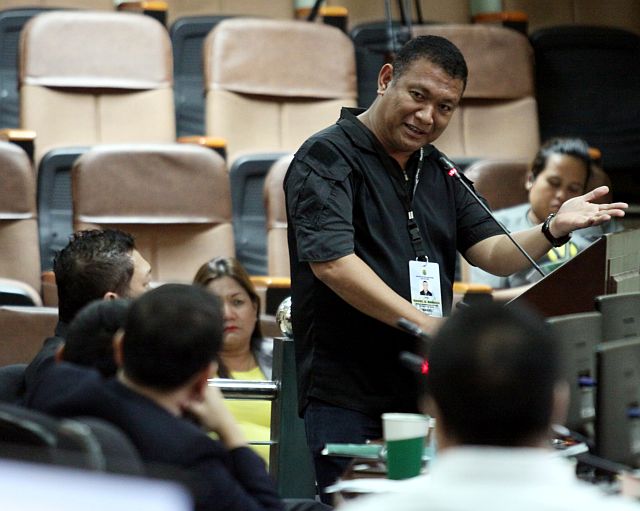
Nagiel Banacial (CDN PHOTO/JUNJIE MENDOZA).
A local 911 emergency hotline may soon be up in Cebu City.
If negotiations and preparations push through, the P15-million system may be in place before next month’s Sinulog Festival celebration.
The system will be provided by the Philippine Long Distance Telephone (PLDT) Inc. Officials from the company met with Cebu City officials yesterday morning to present the system.
Michael Eparwa, digital engagement solutions expert of PLDT, explained that the “Smart SOS Dispatch Service” is a cloud-based public safety emergency response system that will be connected with the existing 911 system of the Department of the Interior and Local Government (DILG).
But instead of transferring calls all the way to Manila, calls made to the 911 hotline within Cebu City will be automatically picked up by the local system offered by PLDT.
“So what happens is once the caller (from Cebu) calls 911, this dispatch system will be seen in the command center wherein they get to see where the responders area via GPS (global positioning system) tracking. And they will be able to pinpoint how many minutes the responder will get to the victim or the one who reported the incident,” he explained to reporters yesterday.
This kind of system is already in place in some areas in the country including Ilocos, La Union, Cavite and Puerto Princesa City in Palawan.
Eparwa added that more local government units are getting interested in the system they developed as this can be used through a monthly subscription only.
According to Cebu City Disaster Risk Reduction and Management Office (CCDRRMO) head Nagiel Bañacia, the hotline could be used to report police, fire and medical emergencies.
The hotline will be for free and will be accessible using a cellular phone, he said.
“The problem now is that if there’s an emergency, you can’t call the hotline if you’re using a cellular phone. There are only a few people using landlines now. So, that’s the advantage of this setup. And we’re planning to implement this next year, January, before Sinulog,” he told reporters.
Review
The P15 million budget needed for the system is part of the CCDRRMO’s approved budget for 2018, according to Bañacia.
Although the initial plan is for the city to directly subscribe with PLDT for the system, Bañacia said they still have to refer the concern to the City Legal Office for review and to determine if the city government will need to go through a bidding process in availing of the services of PLDT.
“The P15 million is good for one whole year. But we haven’t finalized the details yet. We still have to check with our legal office,” he said.
Bañacia added they have to consider the likelihood that another provider of the same system and technology would make an offer to the city government, such as Globe Telecommunications.
But he said it was PLDT that has been meeting with City Hall officials including Mayor Tomas Osmeña since last year. And while Globe has reportedly expressed plans to present their own offer, he said it has not happened until now.
“In this kind of system, it is important to have redundancy. So there will be no failures. So if Globe will be able to present, it can also lower the price of the system if we have both systems,” he explained.
Currently, Cebu City’s Command Control Center (C3) could be reached through several cellphone numbers from different telecommunication companies, which are a handful to memorize.
In August last year, a nationwide 911 hotline system was rolled out under the DILG.
Calls made to the hotline were forwarded to a central command center in Manila before local emergency responders and concerned agencies are informed and made to do actual response.
Bañacia was among those who expressed concern on the system back then especially the delay in the response time due to the process.
But with this new system from PLDT, he said part of the system will identify if a 911 call is made within Cebu City. If so, this will be immediately picked up by the local PLDT system.
Calls from neighboring areas like Mandaue City or Lapu-Lapu City will also still be picked up by the system. Bañacia said, though these calls can be transmitted to the LGUs concerned.
“Nevertheless, we already have coordinated with the Provincial Disaster Risk Reduction and Management Office that if there are calls related to their locality, we will pass it to that particular LGU,” he added.
Training
According to Eparwa, once the contract for the service will be finalized, PLDT will be training some City Hall personnel as well as volunteers on how to use the system so it can be operational already by Sinulog.
Eparwa explained that once a call is made to the system, everything will be recorded in their database including the actual call itself, the response time and the responders concerned.
“This is because City Hall will also have to review how fast we can respond to incidents. And we will be able to review also in our analytics what are the areas that are prone to fire, prone to other kinds of crimes,” he said.
This information could also be shared with the police and other concerned agencies for their information and for them to implement appropriate changes and policies.
Another feature of the system is that the staff, even while using regular cellular phones, can communicate using a two-way radio frequency to ensure that the system does not bog down during disasters or when there is no mobile signal.

